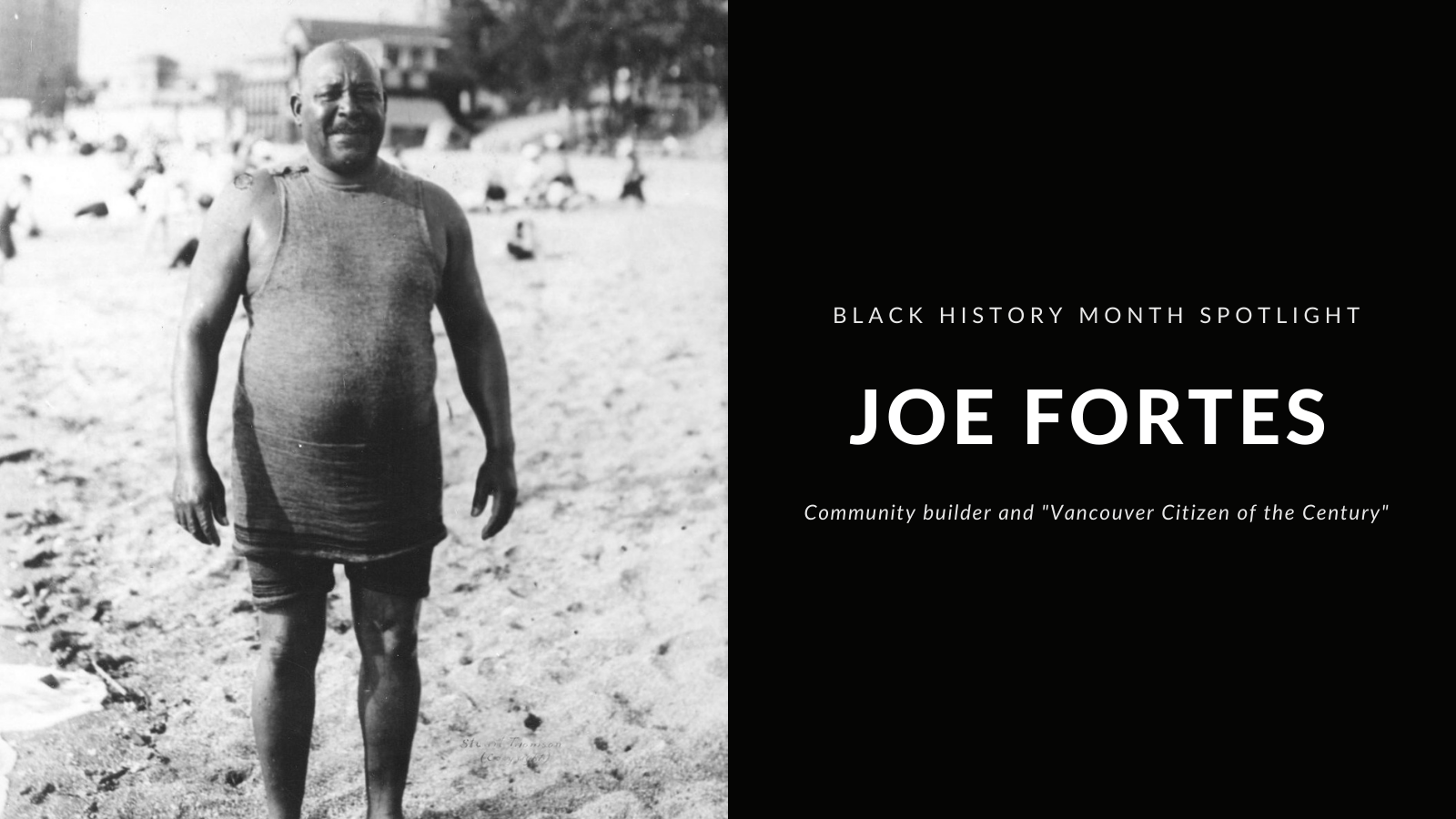
Black History Month Spotlight: Joe Fortes
Throughout February the Housing Central partners are celebrating Black History Month. We are sharing stories of prominent individuals who made a positive impact on our communities. In the process, they helped shape this province and blazed a trail for the Black community.

The City of Vancouver just wouldn’t be the same without Seraphim Joseph “Joe” Fortes (the man, not the restaurant). His legendary presence on the shores of English Bay earned him a permanent spot in the city’s heart and soul. Perhaps more importantly, his ability to shatter the stereotypes about Black people more than a hundred years ago continues to teach us all about the need to combat racism every single day.
Fun Facts:
- Birth: February 9, 1863, Port-of-Spain, Trinidad
- Arrived in Vancouver in 1885
- Best-known lifeguard at English Bay, Vancouver
- In 1927 a memorial drinking fountain was erected at Alexandra Park in Vancouver
- In 1976 the Joe Fortes Branch of the Vancouver City Library was established at 870 Denman Street
- In 1985 a restaurant at 777 Thurlow Street was dedicated to him
- In 1986 was named “Vancouver Citizen of the Century“
- In 2002 his life was portrayed in a short, animated film by the National Film Board of Canada
- In 2013 a Canadian stamp was issued in his honour
Spotlight:
You may have heard his name in reference to a restaurant on Robson Street, a public library branch, and a memorial fountain, but do you know the impact of local legend Joe Fortes?
Early Life

Born in the West Indies in 1863, Joe Fortes came to Vancouver after surviving a shipwreck. After his arrival here on Canada’s west coast, Fortes set up his home in a tent on the beach. There he became Vancouver’s first self-appointed, though unpaid, lifeguard. Through his role as a lifeguard and swimming instructor, Fortes challenged the stereotypical assumptions about Black people. This provided him a degree of acceptance in a predominantly white society.
Life as a Lifeguard

In 1900, Joe became an official employee of the City of Vancouver and received a monthly salary. Five year later, Joe’s temporary tent near the beach was replaced with a new house at 1708 Beach Avenue. This allowed him to devote his full attention to doing what he loved. He would go on to save at least 29 lives from drowning, including adults and children, while teaching three generations of Vancouver children to swim.

It’s no surprise that after his death in 1922 at age 57, the citizens of Vancouver raised $5,000 to erect a water fountain in his honour. The monument, designed by local sculptor Charles Marega, was dedicated in 1927. Located in Alexandra Park near the beach he once patrolled, it is simply inscribed “Little children loved him.” And beloved he was – by both young and old.
